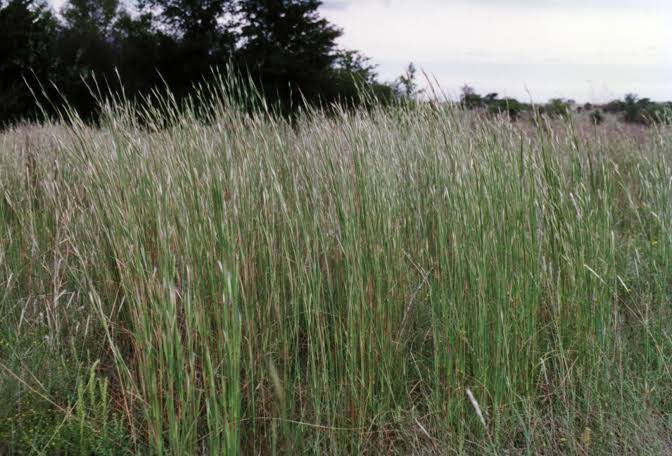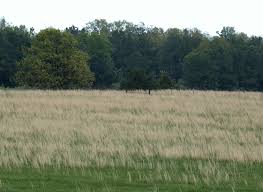Sage Grass, scientifically known as Artemisia tridentata, is a remarkable grass plant that grows in dry regions. Its scientific name might sound fancy, but Sage Grass is a tough and hardy plant that’s quite special. It’s often called sagebrush or just sage, and you can find it in places like deserts and prairies.
Sage Grass has long, thin leaves that are kind of silvery and soft to touch. These leaves help the plant to conserve water, which is super important because it doesn’t rain much where Sage Grass lives. The leaves also have a unique smell kind of like a mix of herbs and earth.
You know, animals in those areas really like Sage Grass. They sometimes eat its leaves, and some even make homes in it. And the cool thing is, Sage Grass isn’t just good for animals; it’s also good for the soil. When its leaves fall off, they create a sort of natural blanket that keeps the soil from getting too hot or too cold. This helps other plants grow around it.
Sage Grass is really good at surviving even in places where not many other plants can. It’s like a hero of the desert, showing how tough nature can be. People have used Sage Grass for a long time too, in different ways. Some have used it for traditional medicine, like making teas to soothe a sore throat. And in the past, Native American tribes used to use it for weaving baskets and making shelter.
All in all, Sage Grass might not look like much, but it’s a true survivor and an important part of the ecosystem. Its ability to adapt to harsh environments and provide for both animals and humans makes it quite an amazing plant.
Read Also: Strawberry Leaves: Economic Importance, Uses and By-Products
Growing and Care Guide of Sage Grass

Here’s a simple growing and care guide for Sage Grass:
Growing Sage Grass
1. Choose the Right Spot: Sage Grass loves sunlight, so pick a spot in your garden that gets plenty of sun. It can handle poor soil, but good drainage is important to prevent waterlogging.
2. Planting Time: The best time to plant Sage Grass is in the spring or fall. You can sow seeds directly in the soil or plant young Sage Grass plants.
3. Spacing: If you’re planting more than one Sage Grass plant, make sure to space them about 2 to 3 feet apart. This gives them enough room to grow.
4. Watering: When you’re just starting out, water the Sage Grass regularly to help it establish its roots. Once it’s settled, you won’t need to water it as often since it’s used to dry conditions.
Caring for Sage Grass
1. Pruning: Sage Grass can get a bit woody and overgrown. To keep it neat and healthy, give it a trim in the spring. Remove any dead or damaged branches.
2. Mulching: Adding a layer of mulch around the base of the plant helps retain moisture and keeps the soil temperature stable.
3. Fertilizing: Sage Grass doesn’t need much fertilizer. If you want, you can give it a bit of a balanced fertilizer in the spring, but don’t overdo it.
4. Dealing with Pests: Sage Grass is pretty tough, but keep an eye out for pests like aphids. If you spot any, you can use insecticidal soap to get rid of them.
5. Harvesting: If you’re using Sage Grass for its herbal properties, you can harvest its leaves. Just be mindful not to take too much from a single plant. Leave some leaves so the plant can continue to grow.
6. Winter Care: Sage Grass is adapted to cold temperatures, but if you’re in an area with harsh winters, a bit of extra protection can help. Mulch around the base of the plant to keep the roots insulated.
Remember, Sage Grass is used to harsh conditions, so it doesn’t need a ton of attention. It’s a bit like a “set it and forget it” kind of plant once it’s established. Enjoy watching this hardy plant thrive in your garden.
Benefits of Sage Grass
Here are some benefits of Sage Grass:
1. Erosion Control: Sage Grass has an extensive root system that helps stabilize soil, preventing erosion in areas prone to wind or water erosion.
2. Wildlife Habitat: The dense growth of Sage Grass provides shelter for various wildlife species. Small animals and birds often find protection and nesting sites within its branches.
3. Air Quality Improvement: Sage Grass is known to release compounds that can improve air quality by reducing certain pollutants. Its presence in the environment can contribute to cleaner air.
4. Soil Improvement: As Sage Grass leaves fall and decompose, they contribute organic matter to the soil, improving its structure and nutrient content.
5. Medicinal Uses: Some cultures have used Sage Grass for traditional medicine. Its leaves have been made into teas that are believed to have soothing properties for ailments like sore throats and coughs.
6. Cultural Significance: Sage Grass holds cultural and historical significance for many indigenous communities. It has been used in rituals, ceremonies, and traditional practices.
7. Aromatic Properties: The leaves of Sage Grass emit a pleasant aroma. This aroma can have a calming effect and is sometimes used in aromatherapy.
8. Land Restoration: In degraded areas, planting Sage Grass can aid in land restoration efforts. Its ability to grow in challenging conditions makes it valuable for rehabilitating damaged ecosystems.
9. Drought Resistance: Sage Grass’s adaptability to arid environments makes it a valuable resource in regions with water scarcity. It requires minimal water once established.
10. Educational Value: Sage Grass serves as a valuable tool for learning about plant adaptations, ecosystems, and the importance of native vegetation in various habitats.
11. Culinary and Crafts: Some culinary enthusiasts and crafters use Sage Grass leaves for seasoning or in crafts due to their unique scent and appearance.
Remember that while Sage Grass has various benefits, its impact might vary depending on the specific context and environment. Whether for ecological reasons, cultural significance, or practical uses, Sage Grass continues to contribute to both natural landscapes and human activities.
Read Also: Strawberry Stems: Economic Importance, Uses and By-Products
Where to Find Sage Grass near Me/You

You can find Sage Grass, also known as sagebrush, in various dry regions, particularly in North America. It’s commonly found in places with arid climates such as deserts, prairies, and open grasslands. Here are some specific regions and types of locations where you might come across Sage Grass:
1. Western United States: Sage Grass is abundant in the western part of the United States, especially in states like Nevada, Utah, Wyoming, and parts of California.
2. Great Basin Desert: This desert region, which covers parts of Nevada, Utah, Idaho, and Oregon, is a prime habitat for Sage Grass.
3. Mojave Desert: Sage Grass can also be found in the Mojave Desert, primarily in southern California and parts of Nevada.
4. Rocky Mountains: Sage Grass can thrive in the foothills and valleys of the Rocky Mountains in states like Colorado, Montana, and Wyoming.
5. Western Canada: It’s not limited to the United States – Sage Grass can also be found in certain areas of Canada’s western provinces.
6. High Plateaus: Look for Sage Grass on high plateaus and elevated areas where the climate is dry and the soil is well-drained.
7. Open Spaces: Sage Grass often grows in wide, open spaces with plenty of sunlight and minimal tree cover.
8. Grasslands: It’s a common sight in grassland ecosystems, where it plays a role in maintaining the balance of the ecosystem.
9. Conservation Areas: Many nature reserves and conservation areas in arid regions will have Sage Grass growing naturally.
When you’re exploring these regions, keep an eye out for the distinctive silvery-gray leaves and the earthy aroma of Sage Grass. Just remember to respect the local environment and any regulations in place if you’re planning to visit natural areas to observe or appreciate Sage Grass.
Read Also: The Importance of Channels of Distribution and Selecting an Appropriate Channel





